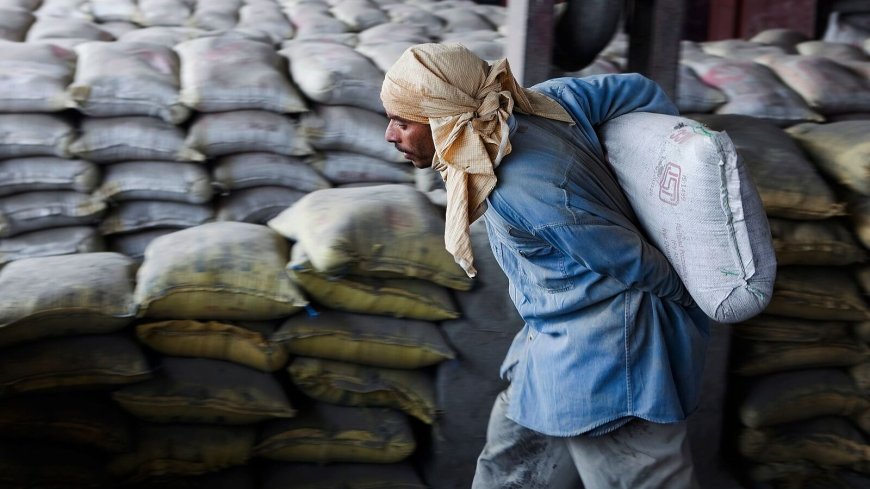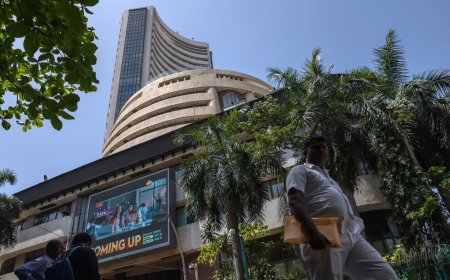Indian Cement Stocks Become Dearer Than Some Global Peers as Valuations Stretch
Indian cement stocks like UltraTech and Shree Cement now command higher valuations than global counterparts like LafargeHolcim and HeidelbergCement. Analysts warn of overheated valuations amid strong infrastructure-led optimism.

Valuation Gap Widens Between Indian Cement Stocks and Global Counterparts
Indian cement companies have seen a sharp rise in stock valuations, making them more expensive than several global peers in the sector. Analysts attribute this divergence to strong investor expectations around long-term infrastructure growth, government-backed capex, and sector consolidation — but warn that the premium pricing might be reaching unsustainable levels in the near term.
As of June 2025, major Indian cement stocks such as UltraTech Cement, Shree Cement, and Ambuja Cements are trading at forward price-to-earnings (P/E) ratios significantly higher than global giants like LafargeHolcim, Cemex, and HeidelbergCement.
Pricey Valuations: By the Numbers
According to Bloomberg data, UltraTech Cement, India’s largest cement maker, is currently trading at a forward P/E of over 40x, while Shree Cement trades at a rich valuation above 50x. In contrast, European cement majors such as HeidelbergCement and LafargeHolcim are trading at 10x–15x forward earnings.
“Investors are pricing in strong growth potential and margin expansion in Indian cement stocks, but the valuation gap with global players is too stark to ignore,” said Anand Rathi, Senior Analyst at Samco Securities.
The average valuation premium for Indian cement stocks over global peers now stands at over 200%, a figure some experts call “excessive,” especially when global demand trends are muted and commodity costs remain volatile.
Drivers Behind the Surge in Indian Cement Valuations
-
Infrastructure Boom in India: India’s push for highways, railways, affordable housing, and urban infrastructure has led to robust cement demand forecasts. The government’s ₹11.11 lakh crore capital expenditure in FY26 Budget has bolstered investor sentiment.
-
Consolidation and Efficiency Gains: Post-Adani’s acquisition of Ambuja and ACC, the industry has seen improving operational efficiency and pricing discipline. Market leaders are focusing on cost rationalization and regional dominance.
-
Retail Investor Interest: With the stock market near record highs, retail investors are increasingly drawn to sectors like cement which are seen as key infrastructure enablers.
-
Limited Global Exposure: Many Indian cement companies are largely domestic-focused, insulating them from global economic slowdowns and currency fluctuations, which impact multinational peers.
Analyst Opinions: Optimism With Caution
Despite the bullish long-term narrative, some analysts urge investors to tread carefully given the sharp re-rating of the sector.
“While demand is expected to grow at 6–8% CAGR over the next five years, current valuations are factoring in a best-case scenario,” said Sonali Verma, equity strategist at Kotak Institutional Equities. “If input costs like coal and petcoke spike again or monsoons delay construction activity, earnings could miss estimates.”
The cement EBITDA per tonne, a key profitability metric, has improved in FY25, but rising power and freight costs could pose headwinds going forward.
Global Context: India vs the Rest
Globally, the cement industry is facing challenges due to stricter environmental norms, weak construction activity in developed markets, and rising decarbonization costs.
“Compared to Indian firms, global players are battling flat volumes and expensive carbon-neutral transitions. This justifies some of the valuation gap, but not all,” noted Markus Thiel, cement sector expert at Deutsche Bank.
Interestingly, even emerging market cement companies in Brazil, Indonesia, and Egypt are trading at significantly lower multiples despite comparable demand growth rates, further spotlighting India's valuation divergence.
Investor Outlook: Should You Be Cautious?
For investors, Indian cement stocks present a conundrum: strong growth visibility but at steep prices. Some fund managers are now looking to rotate to undervalued global names or wait for corrections in Indian players before increasing exposure.
“There’s no denying the India growth story,” said Rajat Kedia, fund manager at Axis Mutual Fund. “But paying 40–50x earnings in a commodity-linked business demands caution. We advise staggered entry or profit booking in overheated counters.”
On the other hand, long-term investors still find merit in holding core positions in UltraTech or Shree Cement, citing their market leadership, geographic reach, and balance sheet strength.
The Indian cement sector is undoubtedly benefiting from strong macro tailwinds and sectoral reforms. However, the expanding valuation gap with global peers raises questions about sustainability. For investors, the key lies in balancing optimism with realism, and anchoring expectations amid a fast-changing economic landscape.
What's Your Reaction?
 Like
0
Like
0
 Dislike
0
Dislike
0
 Love
0
Love
0
 Funny
0
Funny
0
 Angry
0
Angry
0
 Sad
0
Sad
0
 Wow
0
Wow
0













































































